|
|
By Jacquie Milner
milnerjacquie@gmail.com
The Sixth Trans-Tasman Symposium on Occultations (TTSO6) was held in Brisbane, Australia, on Monday 9th April 2012. It was held in conjunction with the twenty fifth National Australian Convention of Amateur Astronomy (NACAA XXV), which is held every second year over the Easter weekend at different locations around Australia.
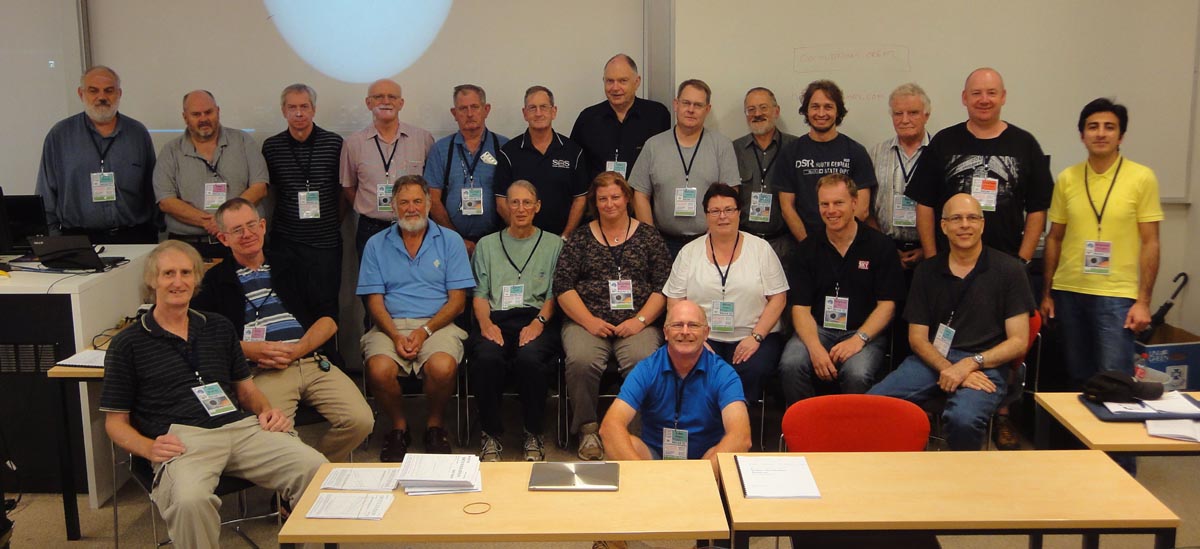
Although the Symposium was only scheduled for one day several occultation related presentations were given beforehand during the main convention. Dave Herald and Dave Gault got things started with a presentation on the soon to be released USNO CCD Astrograph Catalog v4 (UCAC4) star catalogue on Saturday afternoon. This will provide one of the most up to date catalogues for stars to magnitude 16, and has benefited from the testing of its star positions by comparing occultation predictions with actual results from amateur astronomers.
Sunday afternoon began with a summary of the last two year’s activities for “Team Occultation”, a group of observers in New South Wales and the Australian Capital Territory who come together to participate in grazing occultation expeditions in the Sydney-Canberra region. Then Dave Gault, Tony Barry and Hristo Pavlov introduced their latest development in the growing list of equipment being developed for occultation observers; the Astronomical Digital Video System (ADVS). This is basically an all-in-one package with a Flea3 camera feeding to a box with a GPS video time inserter and recording device. It aims to not only simplify the set up needed to capture an occultation, but also uses a new video file format that will reduce the amount of ‘noise’ generated in the recording of the video as well as minimise the file size of the video captured. The ADVS is still in development and is not expected to be available until 2013, when it will be produced on demand once it is ready to be marketed.
Afterwards Dave Herald presented some of the 3D models of asteroids now available via the DAMIT (Database of Asteroid Models from Inversion Techniques) project, which are obtained by combining asteroid occultation observations with photoelectric light curve inversions.
The Symposium was formally opened on Monday morning by the Royal Astronomical Society of New Zealand (RASNZ) Occultation Section Director Graham Blow, then John Talbot joined the meeting via Skype from New Zealand to present a summary of recent planetary occultation events from across the region. John was followed by Dave Herald summarising the best of the results from around the world in the last year or so.
Mohammad Mirbagheri told us about the new Middle East chapter of IOTA (IOTA-ME) and the symposium attendees were interested to note that not only was it apparent that the members there were mostly young (i.e. under 30) but the majority of them were women. This provoked some discussion at the morning break as to why young people in our part of the world don’t seem to be much interested in taking up science, either as a career or a hobby.
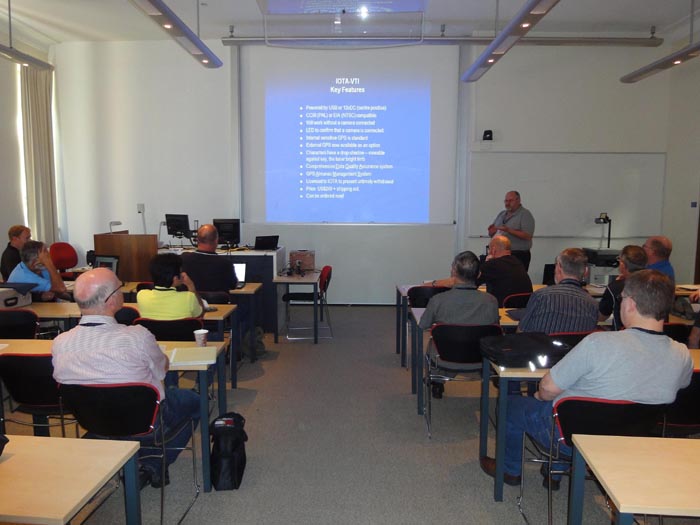 |
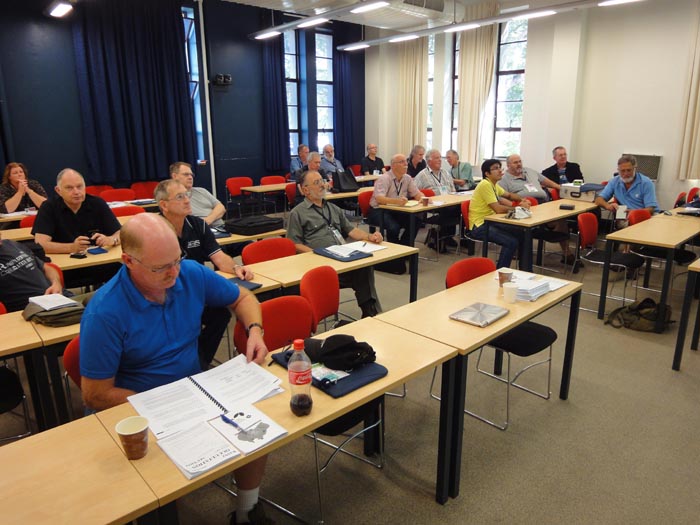 |
International Occultation Timing Association's Video Time Inserter (IOTA-VTI) |
Dave Gault presented the IOTA-VTI for those who hadn’t yet had a chance to meet it in person. This video time inserter, developed by Dave Gault and Tony Barry and launched mid-2011, fills the hole left by the withdrawal of the KIWI-OSD from the market several years ago. Dave also presented a new tool for visual observers, the GPS-ABC, which can provide a high pitched beep generated by a GPS signal. This is currently an open source do-it-yourself kit, with Dave providing all the documentation for you to build your own. (See: http://www.youtube.com/watch?v=adeX3HTqWCk )
Brian Loader joined us via Skype from New Zealand as well to talk about the value of lunar occultations of double stars and how it is now possible to analyse the magnitude of a star’s components with the latest version of LiMovie. Then Dave Herald encouraged us to head to the edges of the path of totality for the upcoming total solar eclipse in far north Queensland to observe and record Baily’s Beads, which can aid in the long period assessment of changes in the diameter of the Sun.
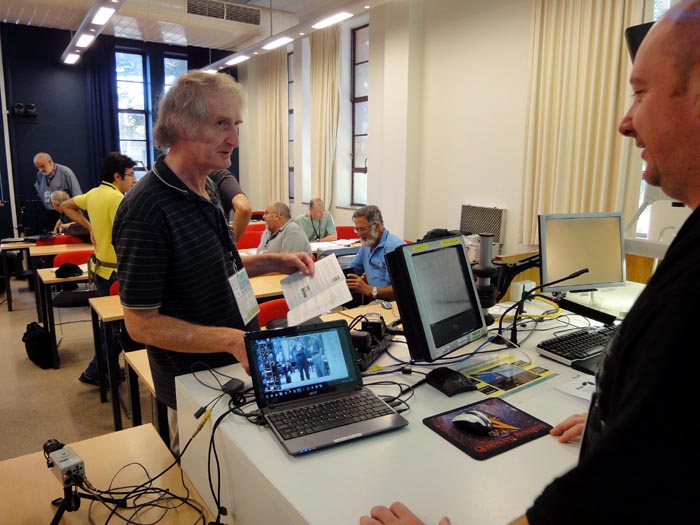 |
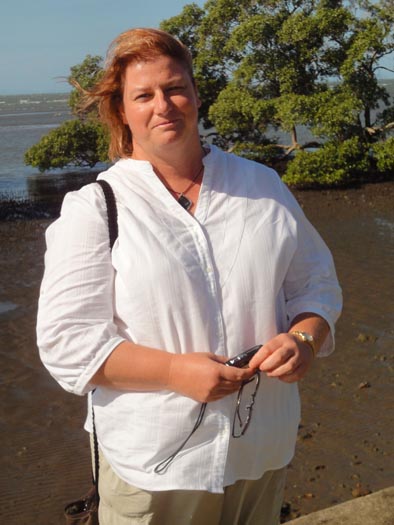 |
Note the GSTAR-EX video camera on the table at left relaying pictures of the room to the laptop. |
After a break for lunch I gave a brief talk on the progress of the Video Occultation Manual which I have been endeavouring to compile during the last two years. Its purpose is to help new observers come to grips with the techniques and technology required to capture occultations on video. This document is still a work in progress and copies of the current version were on hand for people to view and give feedback on. Then we had the “Occultation Clinic”, which was an informal session to allow participants to seek help for particular issues they may be having, as well as to get a closer look at the new equipment that had been presented during the meeting. John Broughton’s lightweight 12.5" f/3 telescope attracted a lot of attention as did his two portable 10” f/4 telescopes modified for easy pre-pointing. These latter weigh only 10kg each (including mirrors) and both can be carried in the one suitcase for ease of travel.
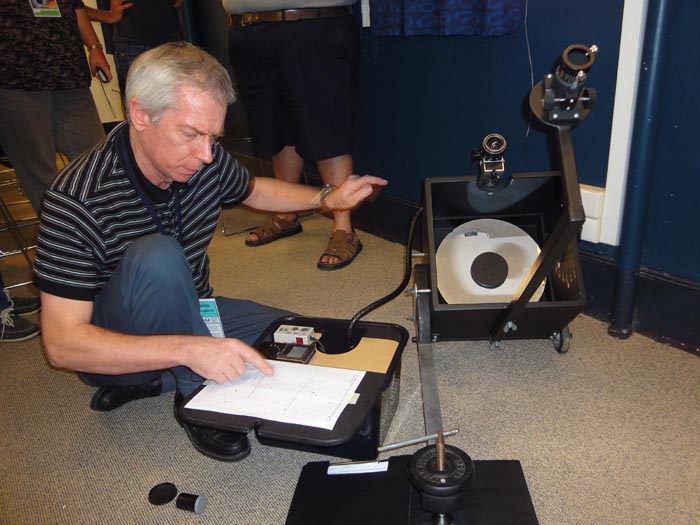 |
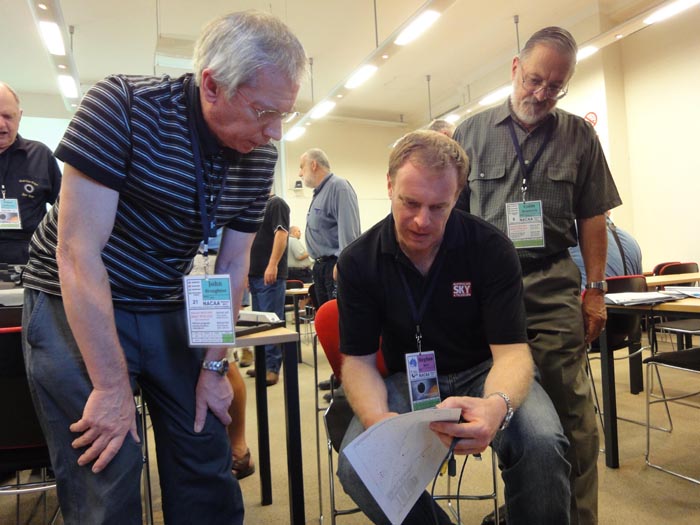 |
The day ended with Jonathan Bradshaw pondering the possibility of using a photometer for occultation work and Dave Herald summarising some of the problems that arose from the spectacular results of the 2011 July 19 (90) Antiope binary asteroid event in the US last year. Fifty-six reports were received for this one event, and a detailed profile of the two asteroid components was able to be generated. There were lessons there for us all to take on board in order to achieve the highest quality data capture in relation to time stamping the video footage and camera settings in any situation.
At the end of the day the twenty-four participants agreed that it would be useful to continue the symposiums in the future. The next symposium, TTSO7, will be held at the RASNZ annual conference in Invercargill, New Zealand in May 2013. Information on the conference for those interested in attending will be available at http://www.rasnz.org.nz/